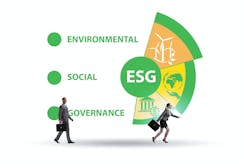Reviewing supply chain reporting, EcoVadis, in a blog, offers some advice on how to deal with laws such as California’s SB 253, Canada’s S-211, EU’s CSRD and CSDDD Corporate Sustainability Directives and Germany’s LkSG.
EcoVadis outlines what the process looks like and what companies should be addressing:
Risk mapping and identification: Analyze your operations and entire supply chain for human rights and environmental risks. The California Transparency Act, for example, requires companies to assess risk across their operations and entire upstream value chain.
Risk verification: Conduct due diligence at the supplier level to verify identified risk. In-scope companies under the LkSG must assess supplier practices for all “substantiated knowledge” of risk identified during the mapping process.
Risk mitigation and prevention: Take decisive steps to mitigate risks and negative impacts and prevent them from occurring. Companies with the scope of the EU CSDDD will need to take “well-documented” steps to identify, manage and prevent any negative impacts from occurring in their supply chains.
Measuring and managing “Scope 3” (supply chain) CHG and carbon emissions: California’s SB 253 law will require companies with more than $1 billion in revenue to report on their Scope 3 emission and have them independently audited. Reports must be submitted digitally and made publicly available.
Monitoring and reporting: Regularly assess the effectiveness of your efforts, recalibrate your approach and ensure transparency. The Canadian S-211 Act requires companies to publish an annual report describing their policies and due diligence on forced labor and child labor, including an assessment of modern slavery risks within their operations and supply chain, and outline the effectiveness of those policies and measures.
